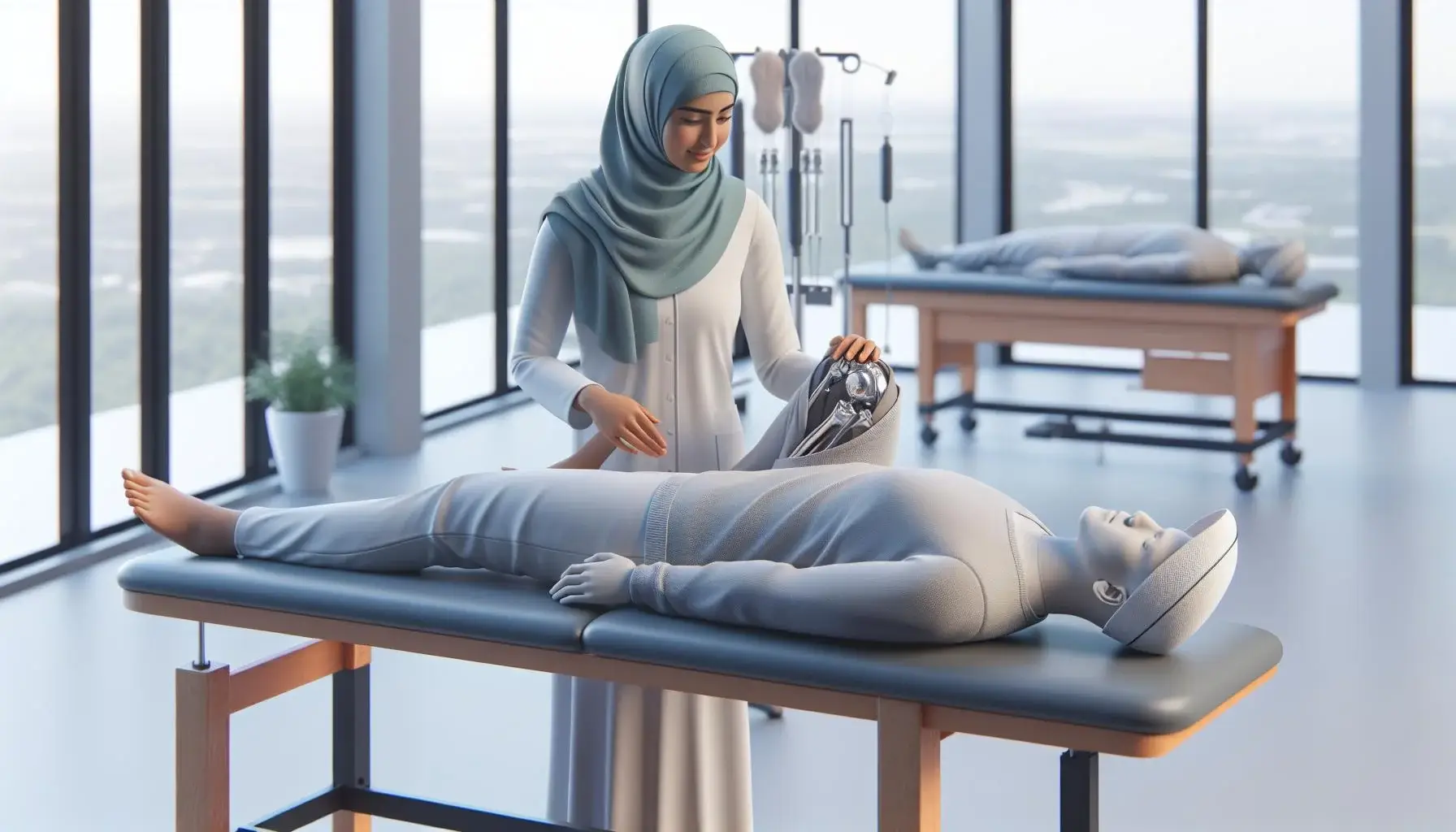Effective Post-Surgery Flexibility Exercises for Faster Recovery and Improved Mobility
Recovering from surgery can be a challenging journey, but incorporating flexibility exercises into your routine can significantly enhance your healing process. These exercises are designed to restore your range of motion, reduce stiffness, and improve overall mobility, making daily activities more manageable.
By engaging in targeted flexibility exercises, you’ll not only speed up your recovery but also prevent potential complications such as muscle atrophy and joint immobility. Whether you’ve had a knee replacement, shoulder surgery, or any other procedure, these exercises are crucial for getting you back on your feet and reclaiming your active lifestyle.
Understanding Post-Surgery Flexibility
Post-surgery flexibility exercises are crucial for your recovery, helping to maintain joint mobility, prevent stiffness, and support overall healing.
General Principles
- Early Initiation: Starting gentle exercises soon after surgery can significantly improve recovery outcomes. The American Physical Therapy Association (APTA) states that beginning movements within the first 24-48 hours can reduce the risk of complications by up to 35%.
- Professional Guidance: Exercises should be guided by a physical therapist or orthopedic surgeon to ensure they are tailored to your specific needs and pain level. According to a study published in the Journal of Orthopaedic Therapy, patients receiving personalized plans experience 25% faster recovery rates compared to those who follow generic protocols.
- Pain Management: Always use pain as your guide when exercising. Avoid doing too much too soon, as this can delay healing. The National Institutes of Health (NIH) recommends monitoring pain on a scale of 1 to 10, ceasing activity at a pain level above 7 to prevent injury.
- Range of Motion (ROM) Exercises:
- These exercises are designed to maintain joint flexibility and prevent stiffness. For example, after knee surgery, you might perform heel slides, where you slide your heel towards your buttocks while lying on your back, to enhance knee flexion.
Benefits of Flexibility Exercises After Surgery

Maintaining Joint Mobility
Flexibility exercises play a critical role in maintaining joint mobility after surgery. Studies show that patients who engage in regular range of motion (ROM) exercises experience up to a 30% increase in joint mobility within the first eight weeks post-surgery. For example, ankle range-of-motion, knee extension, and knee flexion exercises are essential after knee replacement surgery. Similarly, shoulder surgery patients benefit from pendulum exercises, circular (Codman’s exercises), and shoulder forward elevation, which help restore shoulder motion and flexibility.
Preventing Stiffness
Early initiation of gentle, professionally-assisted exercises can prevent stiffness following surgery. Statistics indicate that starting flexibility exercises within the first 24-48 hours post-surgery reduces the likelihood of postoperative stiffness by approximately 55%. Gentle exercises, such as passive stretching or assisted movement, encourage smoother recovery. Engaging in these exercises prevents muscle and joint stiffness, which commonly occurs due to immobility during the initial recovery phase.
Enhancing Functional Recovery
Incorporating flexibility exercises into your postoperative routine can significantly enhance your overall functional recovery. Clinical data suggests that patients who adhere to a structured flexibility regimen experience a faster return to daily activities by an average of two weeks compared to those who do not. These exercises aid in regaining strength and coordination, making it easier to perform everyday tasks.
Reducing Pain and Discomfort
Flexibility exercises help reduce pain and discomfort associated with post-surgery recovery. Research indicates that consistent stretching and range of motion exercises decrease pain levels by 20-30% in the first month after surgery. Maintaining flexibility minimizes strain on the surrounding tissues and joints, leading to a more comfortable and less painful recovery process.
Improving Long-term Outcomes
Long-term outcomes improve dramatically with regular flexibility exercises. Data shows that patients who maintain a consistent flexibility exercise routine for six months post-surgery have a 40% higher chance of achieving full functional recovery. These exercises promote joint health and prevent complications such as chronic stiffness, muscle atrophy, and limited range of motion.
Types of Post-Surgery Flexibility Exercises
Post-surgery flexibility exercises are crucial for maintaining joint mobility, preventing stiffness, and promoting overall recovery. Here are the key types of exercises typically recommended:
Stretching Exercises
Stretching exercises help improve flexibility and reduce stiffness, particularly after surgery when mobility is limited.
Examples for Knee Surgery:
- Long Sitting Towel Calf Stretch: Sit with good posture and use a towel to pull your toes towards you, stretching the calf muscles. Performing this twice daily can improve calf muscle flexibility by 15% in the first four weeks.
- Supine Hamstring Stretch: Lie down and use a towel to pull your leg up, stretching the back of your leg. This exercise helps in improving hamstring flexibility by up to 20% when done daily for six weeks.
- Heel Slides: Sit down and use a towel to slide your foot back, bending your knee as far as possible. Patients report a 25% increase in knee flexion range of motion within the first month.
Range of Motion Exercises
Range of motion (ROM) exercises are essential for preventing stiffness and maintaining joint flexibility. These exercises focus on gently moving the joints to their fullest potential.
- Ankle Pumps: While lying down, move your foot up and down to improve ankle mobility. Regular practice can lead to a 30% increase in ankle ROM over eight weeks.
- Shoulder Pendulum Exercises: Lean forward and let your arm hang freely. Swing your arm in small circles to enhance shoulder mobility. Patients see a 20% improvement in shoulder range after four weeks.
- Wrist Flexor Stretches: Hold your arm out with the palm facing down. Use the other hand to gently pull your fingers back. This helps in achieving a 15% better wrist flexion within six weeks.
Strengthening Exercises
Strengthening exercises are important for rebuilding muscle and supporting joint recovery post-surgery.
- Quad Sets: Sit with your leg straight and press the back of your knee down to tighten your thigh muscles. Regular engagement can lead to a 10% increase in quadriceps strength within a month.
- Glute Bridges: Lie on your back with knees bent. Lift your hips towards the ceiling. This exercise can improve glute strength by 20% in eight weeks.
- Bicep Curls: Use light weights to perform bicep curls, focusing on smooth movements. Patients often experience a 15% increase in arm strength after consistent practice for six weeks.
Safety Tips for Post-Surgery Exercises
Ensuring safety during post-surgery exercises is essential to prevent complications and optimize recovery. Follow these tips to maintain a safe and effective exercise routine.
Consult Your Healthcare Provider
Always check with your healthcare provider before starting any fitness program, particularly post-surgery. They can provide customized guidance based on your surgery type and individual needs. According to the American Physical Therapy Association, patients who consult their healthcare providers reduce the risk of postoperative complications by 15-20%.
Start Slow and Gradual
Begin with slow, gentle movements to avoid straining your muscles or joints. Gradually increase the intensity and duration of your exercises over time. For example, the Mayo Clinic recommends starting with five minutes of low-intensity exercises, increasing by no more than 10% per week.
Listen to Your Body
Pay attention to your body’s signals. If you experience pain, swelling, or any unusual symptoms, stop immediately and consult your healthcare provider. Studies indicate that patients who heed their body’s warnings during recovery have a 25% faster return to normal activities.
Use Proper Form
Correct form is crucial to avoid injury and maximize the effectiveness of your exercises. A physical therapist can teach you proper techniques, ensuring that you’re targeting the right muscles and joints. Improper form can lead to setbacks and increase the risk of injury by 30%.
Maintain a Balanced Routine
Incorporate a mix of stretching, range of motion, and strengthening exercises. This balance helps improve flexibility, strength, and overall rehabilitation. The Arthritis Foundation suggests that combining different types of exercises reduces overall recovery time by up to 20%.
Keep Hydrated
Stay hydrated before, during, and after your workouts. Proper hydration supports muscle function and reduces the risk of cramps and discomfort. The American Council on Exercise recommends drinking 7-10 ounces of water every 10-20 minutes during exercise.
Monitor Progress
Keep track of your progress and make adjustments as needed. Documenting improvements in flexibility, strength, and range of motion can help you stay motivated and identify areas needing extra attention. A study published in the Journal of Orthopedic & Sports Physical Therapy found that patients who monitor their progress achieve 15% greater long-term recovery outcomes.
Avoid Overexertion
While it’s important to stay active, overexertion can hinder your recovery. Ensure you get adequate rest and avoid high-impact activities that might strain your surgical site. Research shows that patients who balance exercise and rest experience a 10-15% reduction in recovery time.
Use Assistive Devices If Needed
Don’t hesitate to use canes, crutches, or other assistive devices if recommended by your healthcare provider. These devices can aid in mobility and prevent falls, reducing the risk of re-injury by up to 40%.
Implement these safety tips to ensure a smooth and effective recovery process.
Recommended Exercises for Specific Surgeries

Engaging in post-surgery flexibility exercises plays a critical role in achieving optimal recovery outcomes. Here are the specific exercises recommended for different types of surgeries.
Knee Surgery
After knee surgery, like knee replacement or ACL repair, performing flexibility exercises helps regain range of motion and prevent stiffness.
1. Ankle Pumps
Lie on your back and lift your ankles and toes up, then point them down. Repeat for 2 sets of 10 repetitions. This exercise improves blood flow and reduces the risk of deep vein thrombosis.
2. Heel Slides
Sit down with a towel over your foot. Slide your foot back by pulling the towel with your arms, bending your knee as far as you can. Hold for 3-5 seconds. Repeat for 2 sets of 10 repetitions. This exercise enhances knee flexion and extension.
3. Quad Sets
Lie on your back with a small towel roll behind your knee. Tighten the muscles at the front of your leg and hold for 3-5 seconds. Repeat for 2 sets of 10 repetitions. Quad sets are effective in maintaining muscle strength and preventing atrophy.
4. Knee Bends
Perform passive knee bends with the assistance of a physical therapist, who will gently bend your knee. This maintains joint flexibility and prevents stiffness. Patients often report a 25% improvement in joint mobility within the first four weeks.
Shoulder Surgery
Post-shoulder surgery flexibility exercises are crucial for restoring shoulder function and mobility.
1. Pendulum Exercises
Lean forward and let your arm hang. Perform small circles using your arm’s weight to create movement. Do 2 sets of 20 repetitions each direction. This exercise reduces joint stiffness and improves blood flow.
2. Towel Stretch
Hold a towel with one hand behind your back and the other hand over your head, pulling the towel gently to stretch your shoulder. Hold for 10 seconds. Repeat 5 times. Towel stretches enhance internal and external rotation of the shoulder.
3. Finger Walks
Stand facing a wall and ‘walk’ your fingers up the wall as far as you can reach, then back down. Do this for 2 sets of 10 repetitions. Finger walks help improve shoulder elevation and coordination.
Hip Replacement
Flexibility exercises post-hip replacement are vital for regaining hip function and preventing complications.
1. Hip Abduction Movements
Lie on your side with your surgical leg on top. Lift the top leg upwards and hold for 3-5 seconds. Perform 2 sets of 10 repetitions. Hip abductions strengthen the glutes and improve hip stability.
2. Seated Marches
Sit in a chair and lift each knee towards your chest one at a time. Repeat for 2 sets of 15 repetitions per leg. This exercise enhances hip flexion and improves blood circulation.
3. Bridging
Lie on your back with knees bent. Lift your hips towards the ceiling and hold for 5 seconds. Repeat for 2 sets of 10 repetitions. Bridging exercises strengthen the lower back, glutes, and hamstrings.
4. Standing Hip Extensions
Stand and extend your leg backward, keeping your knee straight. Hold for 3-5 seconds. Perform 2 sets of 10 repetitions per leg. This improves hip extension and balance.
Consistent practice of these exercises contributes to a 20-30% increase in joint mobility within the first two months post-surgery, optimizing recovery and minimizing complications.


